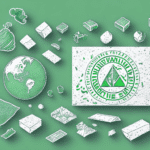The Benefits of Eco-Friendly Product Packaging
In today's world, environmental consciousness has become more important than ever. Businesses are recognizing the necessity of adopting eco-friendly packaging to meet both environmental and market demands. This article delves into the various aspects of sustainable packaging, its environmental impact, and the advantages it offers to businesses.
Understanding the Importance of Sustainable Packaging
Sustainable packaging plays a crucial role in reducing environmental degradation. Traditional packaging materials, especially plastics, have severe long-term impacts on our ecosystems. For instance, plastic waste can take up to 500 years to decompose, leading to significant pollution in oceans and landfills. In contrast, eco-friendly materials such as biodegradable plastics, recycled paper, and plant-based materials help minimize waste and lower the demand for virgin resources.
Furthermore, sustainable packaging influences consumer behavior. A Nielsen study found that 81% of global consumers feel strongly that companies should help improve the environment. By implementing eco-friendly packaging, businesses can attract environmentally conscious consumers, enhancing brand loyalty and sales.
Types of Eco-Friendly Product Packaging
Biodegradable and Compostable Materials
Biodegradable plastics and compostable materials are designed to break down more quickly than traditional plastics. These materials reduce the burden on landfills and decrease environmental pollution.
Plant-Based Packaging
Packaging made from plant-based materials like cornstarch, sugarcane, and bamboo are renewable resources that offer high levels of sustainability. These materials are not only biodegradable but also often have a lower carbon footprint compared to conventional packaging.
Recycled and Reusable Packaging
Utilizing recycled paper, cardboard, and plastics helps in reducing waste and conserving natural resources. Additionally, reusable packaging solutions encourage consumers to return packaging for multiple uses, further minimizing environmental impact.
Innovative Solutions
Emerging packaging innovations include edible packaging made from seaweed and mushroom-based materials. These options aim to eliminate waste entirely by allowing the packaging to be consumed or safely decompose.
The Environmental and Economic Impact of Traditional Packaging
Environmental Consequences
Traditional packaging materials contribute significantly to pollution and greenhouse gas emissions. According to the EPA, only 9% of all plastic waste ever produced has been recycled. This waste accumulates in natural habitats, harming wildlife and ecosystems.
Economic Implications
The production and disposal of non-sustainable packaging materials incur high costs due to resource consumption and waste management. Additionally, businesses face potential fines and reputational damage if they fail to comply with increasingly stringent environmental regulations.
Cost Savings Through Eco-Friendly Packaging
Implementing sustainable packaging can lead to substantial cost reductions for businesses. By using lighter and smaller packaging materials, companies can decrease transportation costs. Additionally, many eco-friendly materials are recyclable, reducing the need for constant production of new packaging and lowering material costs over time.
Moreover, aligning with sustainability can open up opportunities for tax incentives and grants aimed at encouraging environmentally responsible practices. These financial benefits, combined with increased consumer loyalty, contribute to overall profitability.
Rising Consumer Demand for Sustainable Packaging
Today's consumers are more environmentally aware and prefer brands that demonstrate a commitment to sustainability. A IBM study revealed that 57% of consumers are willing to change their purchasing habits to reduce environmental impact. This shift in consumer preferences drives businesses to adopt eco-friendly packaging to stay competitive.
As a result, companies are investing in research and development to innovate sustainable packaging solutions, such as biodegradable containers and reusable packaging systems, to meet the growing demand and differentiate themselves in the market.
Future Trends and Innovations in Sustainable Packaging
Biodegradable and Compostable Materials
The development of advanced biodegradable and compostable materials continues to gain momentum. These materials are engineered to decompose more efficiently, reducing long-term environmental impact.
Seaweed and Mushroom-Based Packaging
Seaweed and mushroom-based packaging are emerging as promising alternatives to traditional plastics. These materials are not only biodegradable but also offer unique properties such as edibility, further minimizing waste.
Recycled Materials and Circular Economy
The push towards a circular economy encourages the use of recycled materials in packaging. By designing packaging that can be easily recycled or reused, businesses can significantly reduce their environmental footprint and contribute to a sustainable future.
Choosing the Right Eco-Friendly Packaging for Your Business
Selecting the appropriate sustainable packaging involves evaluating several factors, including the type of product, shipping requirements, and cost considerations. It's essential to assess the environmental impact of potential materials and their recyclability to ensure they align with your company's sustainability goals.
Collaborating with packaging consultants can help businesses identify the most effective sustainable packaging solutions. Additionally, conducting lifecycle assessments can provide insights into the overall environmental impact of different packaging options, enabling informed decision-making.
Conclusion
Eco-friendly packaging offers significant benefits for both businesses and the environment. By adopting sustainable packaging practices, companies can reduce their environmental impact, achieve cost savings, and meet the evolving demands of environmentally conscious consumers. As innovation continues to drive advancements in sustainable materials and packaging solutions, the future of eco-friendly packaging looks promising, paving the way for a more sustainable and profitable business landscape.






















